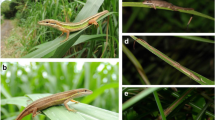Abstract
Survival of individually reared larval and juvenile stage lobsters, Homarus americanus (Milne-Edwards), was significantly higher than in corresponding groups of communally reared individuals. Among communally reared lobsters, the mortality rate was highest in the second-stage larvae and then progressively decreased in the later stages. The relationship between survival and duration of molt period of each life-cycle stage indicates that asynchronous molting in the groups of communally reared lobsters is a contributing factor to the higher mortality rate. The molting and mortality curves of communally held lobsters reared from the first larval to first or second juvenile stage showed best cross correlation at 0- or 1-day time lag. The decreased mortality rate observed in the later larval and juvenile stages appears to have resulted from the establishment of new behavior patterns. Group interactions which are influenced by numerous extrinsic and intrinsic factors lead to higher mortality rate (“cannibalism”) among communally reared lobsters.
Similar content being viewed by others
Literature cited
Atema, J. and D. Engstrom: Sex pheromone in the lobster (Homarus americanus). Nature, Lond. 232, 261–263 (1971)
Beverton, R.J.H. and S.J. Holt: A review of methods for estimating mortality rates in exploited fish populations, with special reference to source of bias in catch sampling. Rapp. P.-v. Reun. Cons. perm. int. Explor. Mer 140, 67–83 (1956)
Cobb, J.S.: Effect of solitude on time between fourth and fifth larval molts in the American lobster (Homarus americanus). J. Fish. Res. Bd Can. 27, 1653–1655 (1970)
— and G.R. Tamm: Social conditions increase intermolt period in juvenile lobsters Homarus americanus. J. Fish. Res. Bd Can. 32, 1941–1943 (1974)
——: Dominance status and molt order in lobsters (Homarus americanus). Mar. Behav. Physiol. 3, 119–124 (1975)
Douglis, M.B.: Some evidence of dominance-subordinate relationships among lobsters, Homarus americanus. (Abstract only). Anat. Rec. 9, p. 553 (1946)
Dunham, P.: Some effects of group housing upon the aggressive behavior of the lobster Homarus americanus. J. Fish. Res. Bd Can. 29, 598–601 (1972)
Eikwort, K.R.: Cannibalism and kin selection in Labidomera clivicollis (Coleoptera: Chrysomelidae). Am. Nat. 107, 452–453 (1973)
Fox, L.R.: Cannibalism in natural populations. A. Rev. Ecol. Syst. 6, 87–106 (1975)
Hughes, J.T.: Biologists breed lobsters selectively. Comml Fish. Rev. 30, p. 20 (1968)
— and G.C. Matthiessen: Observations on the biology of the American lobster, Homarus americanus. Limnol. Oceanogr. 7, 414–421 (1962)
—, R.A. Shleser and G. Tachobanoglous: A rearing tank for lobster larvae and other aquatic species. Progve Fish Cult. 36, 129–133 (1974)
—, J.J. Sullivan and R. Shleser: Enhancement of lobster growth. Science, N.Y. 177, 1110–1111 (1972)
Kensler, C.B.: The potential of lobster culture. Am. Fish Fmr Wld Aquacult. News 1, 8–12 (1970)
Lowe, M.E.: Dominance-subordinate relationships in the crawfish Cambarellus schufeltii. Tulane Stud. Zool. 4, 139–170 (1956)
Mead, A.D.: A method of lobster culture. Bull. Bur. Fish., Wash. 28, 219–240 (1908)
Passano, L.M.: Molting and its control. In: The physiology of Crustacea. Vol. I. Metabolism and growth. pp 473–536. Ed. by T.H. Waterman. New York & London: Academic Press 1960
Sastry, A.N.: An experimental culture-research facility for the American lobster, Homarus americanus. Proc. Eur. mar. biol. Symp. 10, (1976). (In press)
Schuur, A.M., P.G. Allen and L.W. Bostford: An analysis of three facilities for commercial production of Homarus americanus. 20 pp. Chicago: American Society of Agriculture Engineers, Dec. 10–13, 1974. (Pap. Am. Soc. agric. Engrs no. 74-5517, 1–20)
Scrivener, J.C.E.: Agonistic behavior of the American lobster Homarus americanus (Milne-Edwards). Tech. Rep. Fish. Res. Bd Can. 235, 1–128 (1971)
Serfling, S.A., J.C. Van Olst and R.F. Ford: A recirculating culture system for larvae of the American lobster, Homarus americanus. Aquaculture 3, 303–309 (1974)
Stewart, J.E. and H.J. Squires: Adverse conditions as inhibitors of ecdysis in the lobster, Homarus americanus. J. Fish. Res. Bd Can. 25, 1763–1774 (1968)
Waterman, T.H. (Ed.): The physiology of Crustacea. Vol. 2. Sense organs, integration, and behavior, 681 pp. New York: Academic Press 1961
Wilder, D.G.: Artificial rearing of lobsters. Fish. Can. 23, 14–15 (1971)
Author information
Authors and Affiliations
Additional information
Communicated by M.R. Tripp, Newark
Rights and permissions
About this article
Cite this article
Sastry, A.N., Zeitlin-Hale, L. Survival of communally reared larval and juvenile lobsters, Homarus americanus . Mar. Biol. 39, 297–303 (1977). https://doi.org/10.1007/BF00391932
Accepted:
Issue Date:
DOI: https://doi.org/10.1007/BF00391932




